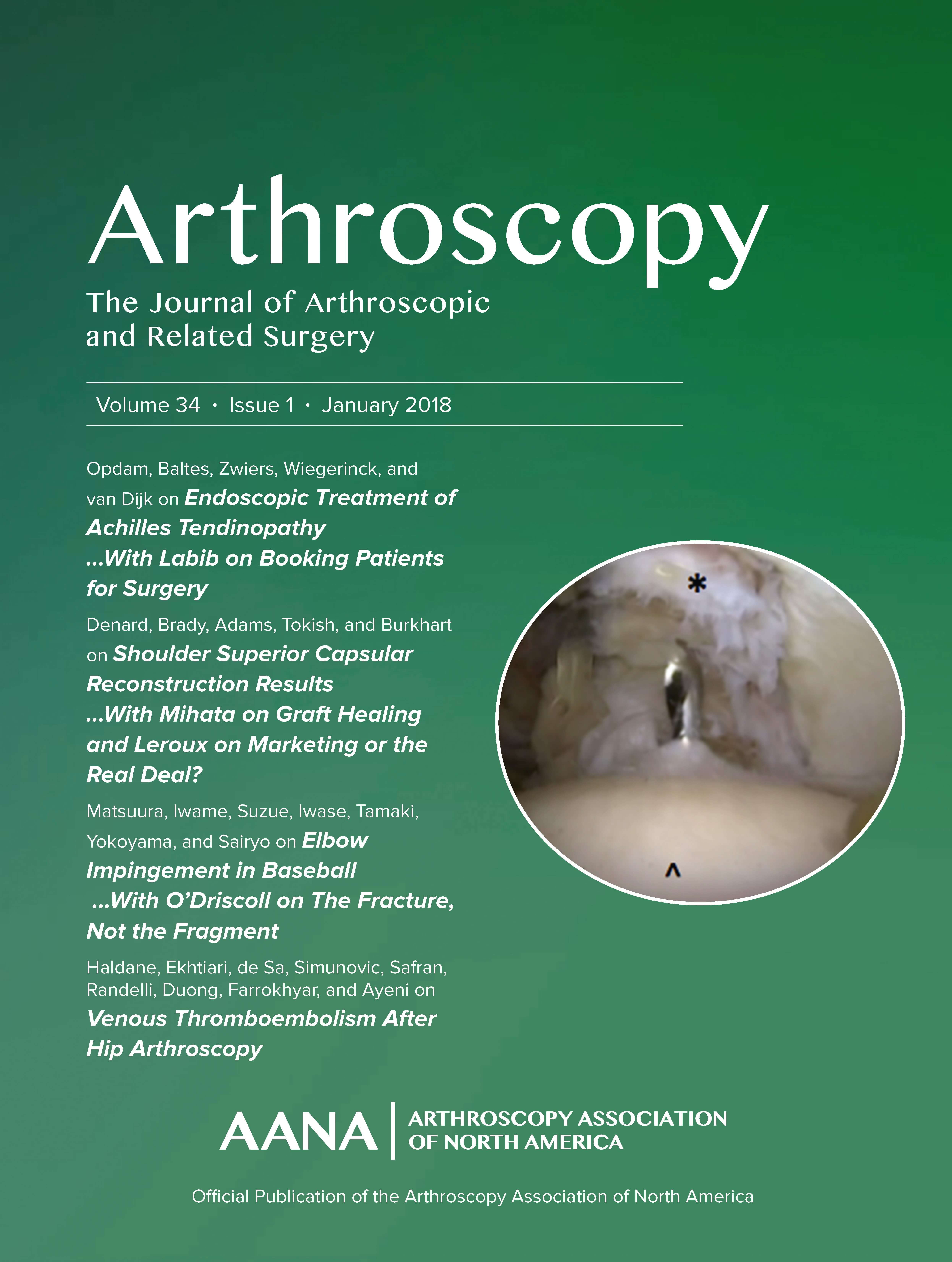
ACLR: No difference between hamstring autograft and fresh-frozen tibialis allograft

ACLR: No difference between hamstring autograft and fresh-frozen tibialis allograft
The Effect of Graft Tissue on Anterior Cruciate Ligament Outcomes: A Multicenter, Prospective, Randomized Controlled Trial Comparing Autograft Hamstrings With Fresh-Frozen Anterior Tibialis Allograft
Arthroscopy. 2012 Aug;28(8):1079-86. doi: 10.1016/j.arthro.2012.05.010Did you know you're eligible to earn 0.5 CME credits for reading this report? Click Here
Synopsis
147 patients undergoing anterior cruciate ligament (ACL) reconstruction were randomized to receive surgery with autogenous hamstring tendon or with fresh-frozen allograft anterior tibialis tendon. Over 2 years, there was no difference between the two groups with regard to stability, pivot shift test results, radiographic outcomes, International Knee Documentation Committee (IKDC) subjective and functional scores, and complications.
Was the allocation sequence adequately generated?
Was allocation adequately concealed?
Blinding Treatment Providers: Was knowledge of the allocated interventions adequately prevented?
Blinding Outcome Assessors: Was knowledge of the allocated interventions adequately prevented?
Blinding Patients: Was knowledge of the allocated interventions adequately prevented?
Was loss to follow-up (missing outcome data) infrequent?
Are reports of the study free of suggestion of selective outcome reporting?
Were outcomes objective, patient-important and assessed in a manner to limit bias (ie. duplicate assessors, Independent assessors)?
Was the sample size sufficiently large to assure a balance of prognosis and sufficiently large number of outcome events?
Was investigator expertise/experience with both treatment and control techniques likely the same (ie.were criteria for surgeon participation/expertise provided)?
Yes = 1
Uncertain = 0.5
Not Relevant = 0
No = 0
The Reporting Criteria Assessment evaluates the transparency with which authors report the methodological and trial characteristics of the trial within the publication. The assessment is divided into five categories which are presented below.
4/4
Randomization
3/4
Outcome Measurements
2/4
Inclusion / Exclusion
4/4
Therapy Description
4/4
Statistics
Detsky AS, Naylor CD, O'Rourke K, McGeer AJ, L'Abbé KA. J Clin Epidemiol. 1992;45:255-65
The Fragility Index is a tool that aids in the interpretation of significant findings, providing a measure of strength for a result. The Fragility Index represents the number of consecutive events that need to be added to a dichotomous outcome to make the finding no longer significant. A small number represents a weaker finding and a large number represents a stronger finding.
Why was this study needed now?
Although research has shown excellent results with regard to the use of autografts in ACL reconstruction, some surgeons prefer to use allografts in order to prevent the occurrence of harvest site morbidity. There is little high quality research investigating the effectiveness of allografts, in that most studies have been retrospective in nature. From this research, it has been determined that rejection and slow recovery are potential problems in patients who receive allografts. This study aimed to compare the use of an autogenous hamstring tendon with a fresh-frozen allograft anterior tibialis tendon in ACL reconstruction in order to determine if there is a difference between the two treatments with regard to stability and functioning.
What was the principal research question?
Is there a difference between the use of autogenous hamstring tendon and fresh-frozen anterior tibialis tendon allograft in ACL reconstruction with regard to clinical outcomes and knee stability assessed over 2 years?
What were the important findings?
- At 2 years, there was no significant difference between the two groups for the maximum manual KT scores (autograft: 85% with normal stability, allograft: 90% with normal stability; p>0.05)
- The two groups did not differ with respect to mean IKDC subjective scores (91.0, 90.9; p>0.05) and mean functional IKDC scores (85% normal, 90% normal; p>0.05) at 2 years
- There was no significant difference between the two groups at 2 years for the pivot-shift test results (89% with normal findings, 92% with normal findings; p>0.05), the number of patients with effusion (1 in the autograft group and 0 in the allograft group; p>0.05), knee extension (94% with normal extension, 96% with normal extension; p>0.05), thigh circumference (p>0.05), and the single leg hop test results (p>0.05)
- According to radiographs, 93% of the autograft group and 88% of the allograft group had no evidence of medial compartment arthrosis (p>0.05). 96% of the autograft group and 88% of the allograft group demonstrated no evidence of lateral compartment arthrosis.
What should I remember most?
Results suggest that there is no difference between the use of a hamstring autograft and the use of a fresh-frozen soft-tissue tibialis allograft in ACL reconstruction with regard to clinical outcomes, function, knee stability, and radiographic outcomes at 2 years.
How will this affect the care of my patients?
Further research with appropriate sample sizes, greater follow up, and patient-centered clinical outcomes is needed to compare the effectiveness of autografts and allografts in ACL reconstruction.
Learn about our AI Driven
High Impact Search Feature
Our AI driven High Impact metric calculates the impact an article will have by considering both the publishing journal and the content of the article itself. Built using the latest advances in natural language processing, OE High Impact predicts an article’s future number of citations better than impact factor alone.
Continue



 LOGIN
LOGIN

Join the Conversation
Please Login or Join to leave comments.